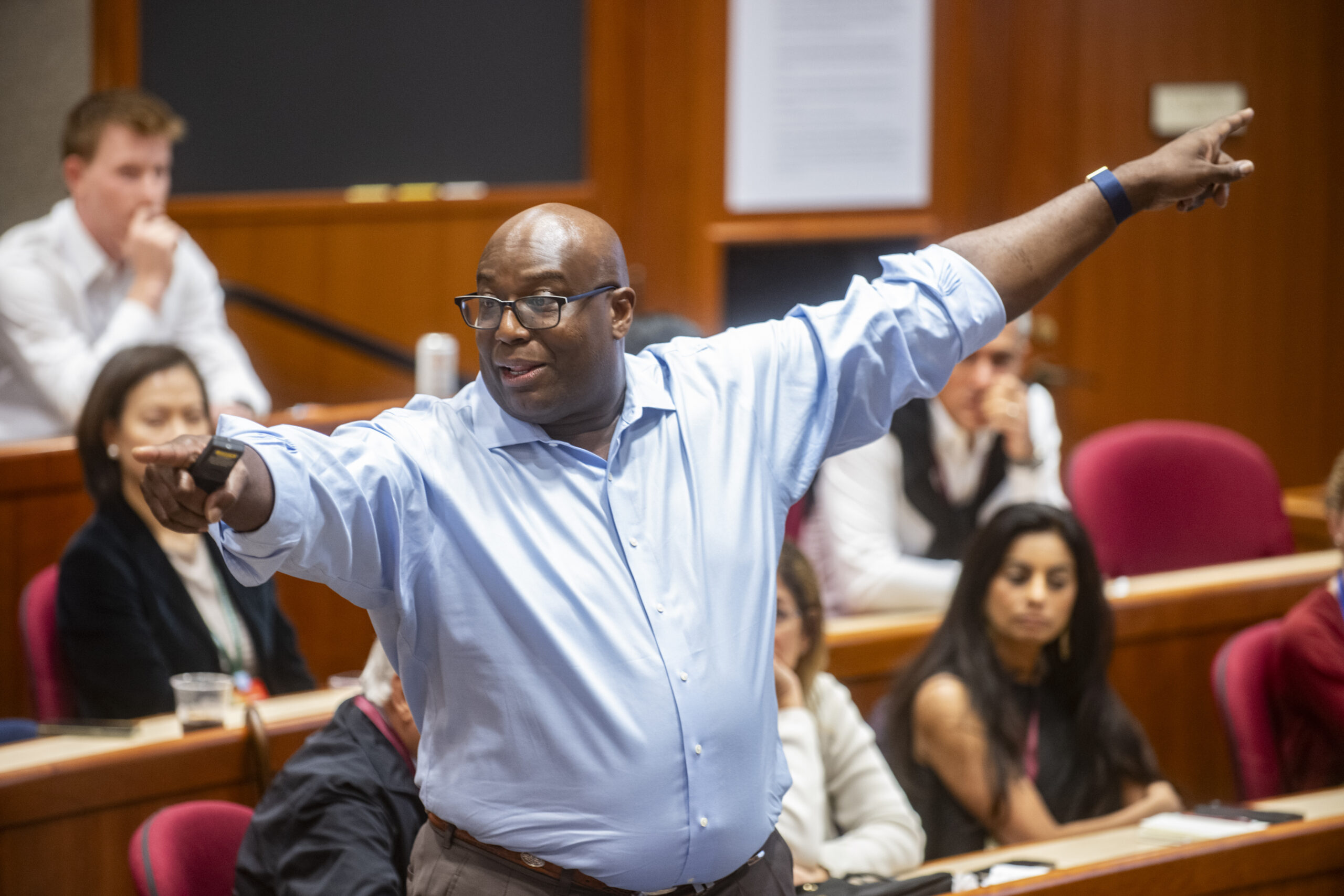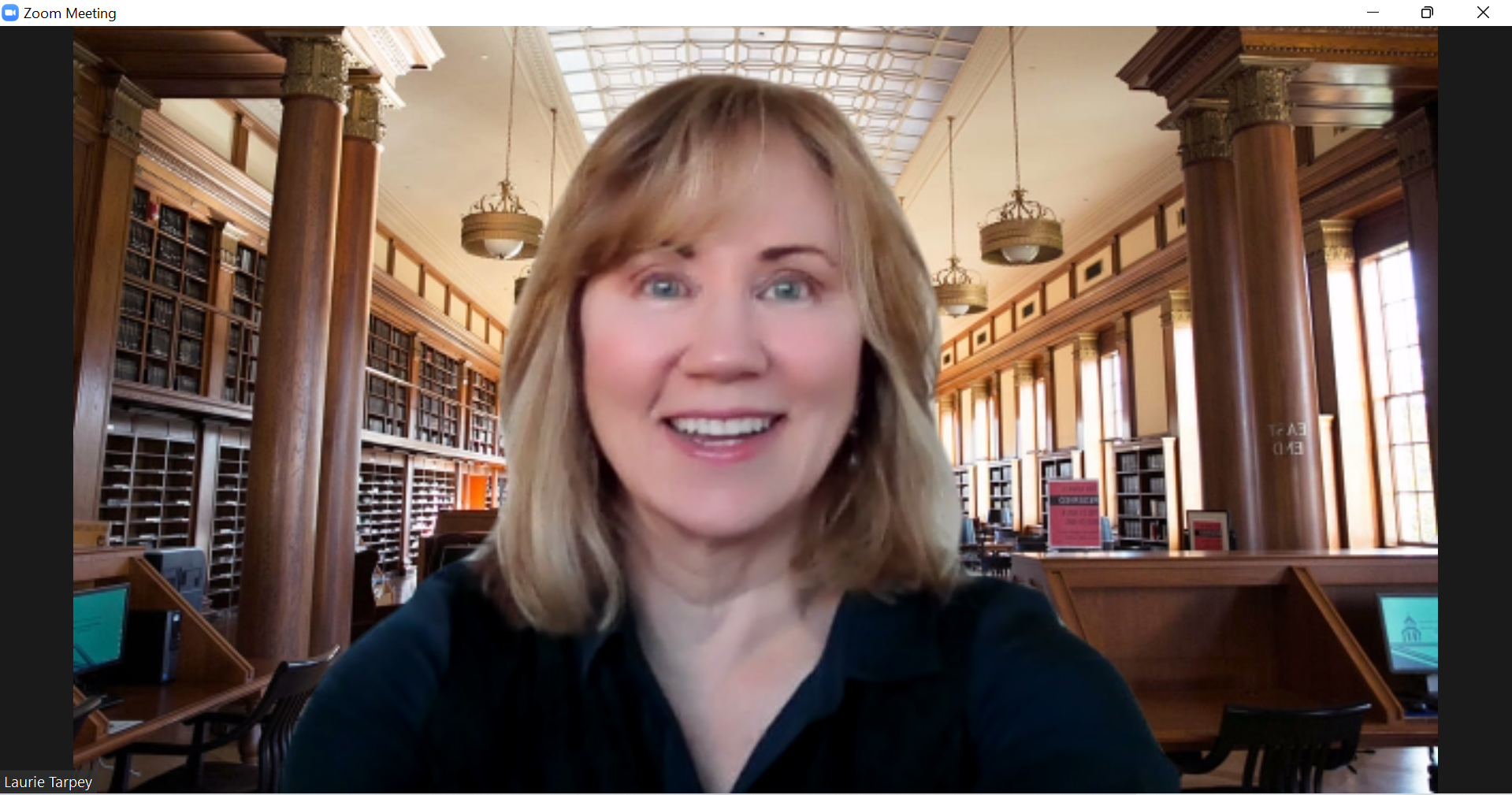

Laurie Tarpey is the Board Treasurer of Child Care Aware of America and serves on the executive, finance and strategic planning committees. The organization’s mission is to advance a child care system that effectively serves all children and families, work strengthened by a national network of child care resource and referral agencies and diverse members and partners. Laurie attended the Governing for Nonprofit Excellence – Virtual (GNE) Executive Education program at Harvard Business School in October. In the post below, she discusses her experiences in the program.
I earned my MBA at HBS. I returned for an update on best practices that continually evolve through scholarship and the experiences of the business and social sectors. I also returned to share in collective learning with peers facing similar challenges. One difference in joining an HBS program with 25 years of experience versus five – I wasn’t afraid of being cold called 😊. Another difference – I realized the value of the discussion group. In the first semester of my MBA, I was planning our December wedding. For most of the next two semesters I was expecting our first child and in the final semester, I had an infant to love and care for. I thought (wrongly, looking back) that I didn’t have time for discussion groups. But the GNE discussion group was valuable and enjoyable. My group bonded! We’ve planned to meet when in one another’s cities and will reunite virtually to share the ways we’re using what we’ve learned and to offer mutual support.
Through my CFO roles and volunteer work, I’ve become familiar with nearly thirty nonprofits. Often nonprofits want to scale their impact. We learned in the program about the myriad of issues to consider in scaling impact.
One organization I worked with, American Nurses Association, has sought to expand impact through a social movement called Healthy Nurse Healthy Nation. Founded in 2017 under then CEO Marla Weston, the program engages nurses and related stakeholders via an online platform and social media in health challenges, discussion boards, contests, and blogs. Nurse health is in crisis. ANA hopes its social movement will promote not only increased nurse well-being but through improved health and role-modeling, nurses’ capacity to improve the health of the entire nation.
I thought of ANA’s social movement when we learned about Mumbai-based Jai Vakeel Foundation, which serves children with intellectual disabilities (ID). These children have historically faced exclusion and humiliation. Jai Vakeel’s goal grew beyond teaching and care, mainly on its campus, to societal inclusion by maximizing potential. CEO Archana Chandra’s team introduced programs for the children and their families to enjoy social interaction and community integration. Jai Vakeel also partnered with the local government to introduce a proven curriculum to the public schools. These programs aim to help children with ID develop social skills and maximize their education. They also aim to sensitize communities to the intellectually disabled, destigmatize the condition and change hearts and minds at scale.
Child Care Aware of America, where I serve on the board, seeks to transform the entire child care system. It is characterized by a lack of consistent quality, equity, affordability and fair pay for providers, predominantly women of color. The ecosystem is vast and the influencers many, making system-level transformation challenging. We have a multi-pronged approach including intentionally addressing equity within our own board and organization, and federal advocacy for investments in system capacity and pay equity for providers. Our CEO, Lynette Fraga, hosts a podcast where leaders share how they invite all types of voices to be heard. We will also, in this strategic planning year at this inflection point in the history of the child care system, engage diverse parents and families to help us reimagine a quality, equitable child care system. Our goal is a transformed system created not for diverse families and providers, but with them.
I was therefore excited by the program's case study of system-level impact with the UK’s Guide Dogs for the Blind Association (GDBA). New CEO Geraldine Peacock recognized that GDBA served visually impaired people who wanted greater mobility through a trained guide dog well. But she saw that the industry serving the broader needs of the visually impaired lacked capacity. By investing resources and developing novel partnerships with local governments and NGOs, she led an expansion of the sector’s capacity to serve more visually impaired people better. Ms. Peacock also helped lead the initiative to unify and strengthen the impact of the umbrella groups advocating for the interests of the visually impaired. It took vision, courage, and adept change management to lift her sight beyond achieving success for the organization to expanding success for the sector.
Another key takeaway from the program is the strategic analysis framework taught by Professor Dutch Leonard. The framework is represented by a Venn diagram with three circles for: 1) value, i.e., what the organization intends to achieve to meet a social need or to meet an organizational need in service to a social need, 2) resources, and 3) capabilities. For each major existing and proposed initiative, board members should ask: are we working at the intersection of all three component circles?
This clear framework applied with rigor can illuminate issues I’ve noted such as:
Both Jai Vakeel and GDBA used this type of thinking to eliminate non-core and less effective programs to free resources and management time (often itself a scarce resource) to expand impact.
In the final moments of the last session the chat buzzed, as it had throughout the virtual program, with aha insights, supportive remarks and shared resources. We seemed reluctant to end our time together. There was a palpable sense of increased empowerment to contribute to our organizations’ missions, and an also-palpable shared hope for one another’s success. Thus, the closing moments were among many inspiring moments in a program that stirred my heart and challenged my intellect.
To learn more:
Visit: www.childcareaware.org and podcasts.apple.com/us/podcast/a-seat-at-the-table/id1552408525
Twitter: @ChildCareAware